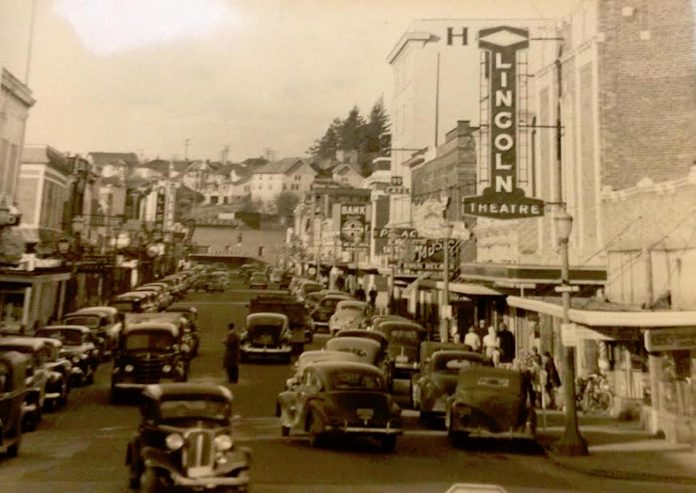
In the early 1900s, downtown Mount Vernon was home to three theaters. The Lido, on South First Street, is now home to office spaces. Facing the Riverwalk Plaza, the Lyric is being transformed into a brewery after years spent as an antique shop. Only the Lincoln Theatre, at the end of South First Street, remains resplendent in its 1920s moviegoing glory.
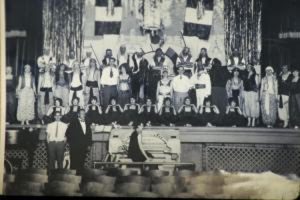
The Lincoln Theatre was built in 1926 by Elden Wigel (E.W.) Pollock, a publisher for The Argus, a Mount Vernon newspaper. His wife, Alice Decatur, had family land at the end of South First Street, which became the site of the Lincoln Theatre. After relocating the Decatur family home, construction for the Lincoln Theatre began. Seattle architect William Aitken was hired for the project and designed a modified Renaissance Revival theater. However, it was E.W. Pollock’s business partner, Edwin Halberg, that created the real magic inside.
Halberg was the visionary behind the Lincoln Theatre’s decor. During the 1920s, period theaters with themed decor were in vogue. Halberg, ignoring requests for an Egyptian motif, opted for a Spanish motif instead. He designed the carpet, draperies, decorative wall effects and the lighting. When the Lincoln Theatre opened its doors on April 21, 1926, it was to rave reviews. The Argus newspaper reported on the Lincoln Theatre in early May saying, “Nothing like it has ever been constructed before… the theatrical world is sitting back astounded.” While the Lincoln Theatre enjoyed what would be the first of many years in Mount Vernon, the future of its Wurlitzer organ was under threat.
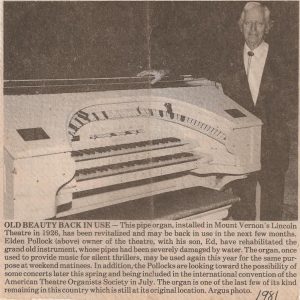
The Lincoln Theatre’s crowning jewel was meant to be its Wurlitzer organ, which were designed to accompany silent movies. Not only did they have the traditional pipes and keyboards of an organ, but a Wurlitzer had an additional sound effect system. Utilizing castanets, drums, cymbals, marimbas and more, a Wurlitzer could transform a silent film from comedic to romantic with the use of a few sound effects. The Lincoln Theatre’s Wurlitzer cost $22,500 to purchase and install, making it nearly a quarter of the cost required to build the theatre itself. It was a hefty investment meant to last forever, but a little over a year later in October of 1927, the first “talkie” film was released and rendered the Wurlitzer obsolete.
While the Wurlitzer’s future remained uncertain, the Lincoln Theatre embraced “talkies” and flourished. The Shirley Temple movies opened at the Lincoln Theatre in the 1930s. The 1940s saw the “Gone with The Wind” premiere and the debut of concessions sold in the lobby. The theatre was also a popular stop on the vaudeville circuit. The Lincoln Theatre ran smoothly until a slight hiccup in management occurred when tenants leasing the theatre failed to pay rent. E.W. Pollock’s son, Elden D. Pollock, moved to Mount Vernon in 1932 and agreed to become the manager of the theatre. What was intended to be a temporary position soon turned into 60 years of devoted care to the Lincoln Theatre.
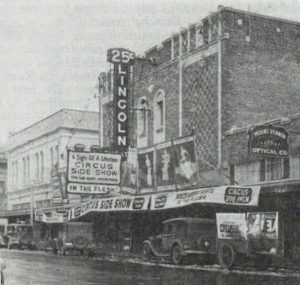
Aside from a brief closure during a smallpox scare at an unknown point in time, the Lincoln Theatre’s only closure to the public came in 1984. At that time, city progressives proposed renovating the Lincoln Theatre into usable retail space, a common fate for older theaters. The theatre was bought, however, by the Picket family in 1985 and shortly afterwards the Lincoln Theatre Center Foundation was established by citizens invested in the restoration and preservation of the theatre. The Lincoln Theatre reopened to the public in 1987 for an open house during the annual Skagit Valley Tulip Festival. The following year, the Lincoln Theatre Center Foundation held its first fundraiser, a costumed gala that featured music, dancing and live entertainment. The Lincoln Theatre evolved into an all-around performing arts center, hosting symphonies, pageants, concerts, body-building competitions and drag shows.
In a few years, the Lincoln Theatre will celebrate its 100-year anniversary in Mount Vernon. With modern renovations being made hand-in-hand with era-appropriate restorations, the theatre and its volunteers are looking at both the past and future.
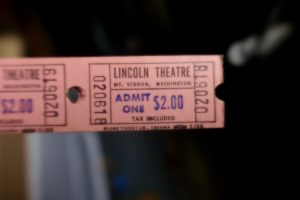
The Lincoln Theatre Center Foundation encourages community members with photos, news articles, or journals relating to the theatre to share their history. The Wurlitzer organ, lovingly restored in the 1970s and played before every show to this day, will need volunteers to continue caring for it as its original rescuers retire. Performers still sign their names on the dressing room doors and walls backstage, mixing 21st century signatures with 20th century memories. Even the theatre “ghost” plays his part, adding yet another special element to the Lincoln Theatre’s cinematic history.
The Lincoln Theatre
712 South First Street, Mount Vernon
Ticket Office: 360-336-8955



































